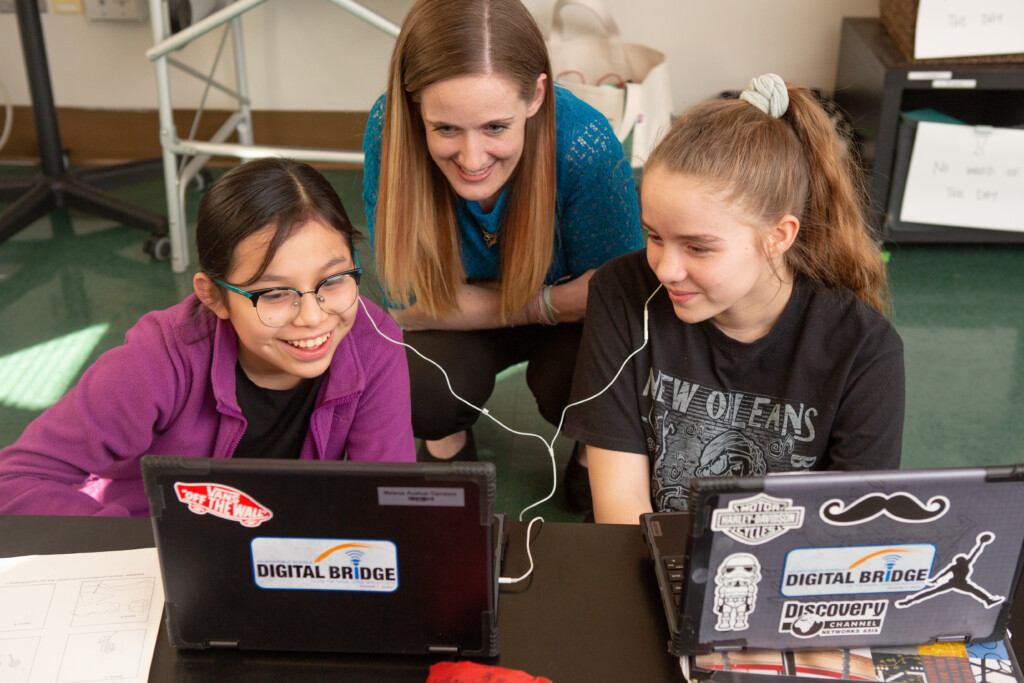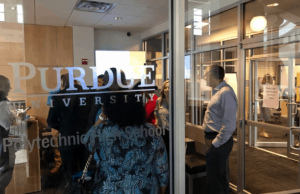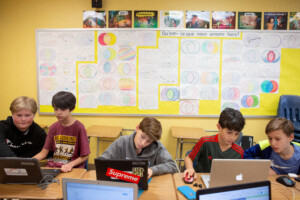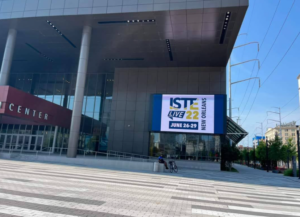Educators discuss the state of creativity in an AI world
Key Points
-
AI allows for a more personalized learning experience, enabling students to explore creative ideas without traditional classroom limitations.
-
The focus of technology integration should be on how the tool is used within lessons, not just the tool itself

By: Joe & Kristin Merrill, LaKeshia Brooks, Dominique’ Harbour, Erika Sandstrom
Another school year is in full swing and one of the most discussed topics in education is the integration of artificial intelligence in classrooms.
The conversation has sparked an interesting debate: is AI enhancing or eroding creativity among students? A new report from Canva reveals that 62% of educators believe student creativity has increased over the past few years. We recently spoke with several edtech-savvy educators from all across the U.S. to get their thoughts on the state of creativity in the classroom and to discuss their process for integrating AI.

Kristin Merrill, 4th Grade Teacher, Certified Microsoft Innovative Educator
Joe Merrill, 1st Grade Teacher, Certified Microsoft Innovative Educator (Naples, FL)
Using AI levels the playing field for creativity. Now, there’s no need for someone who thinks they can’t draw to avoid illustrating a picture. With AI, they can still use those creative thoughts to bring their vision to reality. We also believe it is vital to educate our students on the importance of using AI responsibly.
This year, we are using the app School AI, which allows educators to create Spaces (or chatbots) that can be used to help coach or tutor our students, act as a historical figure, or character from a book, and much more. These Spaces can be tied directly into standards, and the educator is able to monitor the conversations between the students and AI to help ensure the responsible use of the technology.
We believe that AI acts as a source of inspiration. There are times where you enter a prompt, and the results may not be exactly what you had envisioned. Maybe you need to be a bit more creative with your prompt, or perhaps how it is worded. We spend a lot of time teaching about prompting the AI, and we explain the importance of phrasing exactly what the students are looking for. These skills transition into other curricular areas, so they’re quite beneficial!

LaKeshia Brooks, Virtual K-12 math teacher, Microsoft Innovative Education Expert, Education Imagine Academy (Wichita, KS)
AI encourages creativity, not only among students but with teachers as well. As a teacher, having the ability to bring lessons to life and personalize curriculum for my student’s needs is a major time saver that allows me to explore other classroom resources and work independently with students.
This year I have the opportunity to teach Digital Literacy to 6th graders using Common Sense Education resources and instruct students on AI. As a math teacher, AI looks a little different for my students. I am currently using AI-assisted models like Microsoft Math Solver to help them see the step-by-step process of solving a problem and boost their confidence as they work asynchronously. Overall, I plan to increase my students’ exposure to and experience with AI this year.

Dominique’ Harbour, Educational Technology Specialist, Atlanta Public Schools (Atlanta, GA)
I support the integration of AI by training teachers on how to effectively and creatively deploy artificial intelligence with students in the classroom. I highlight the pros and cons of AI and provide ideas and strategies for its use. We allow teachers to engage with our recommended AI tools from a student’s perspective to help them see what the user experience is like. I also emphasize the skill of prompting to maximize its efficiency.
I believe that AI can absolutely enhance and support creativity in the classroom. As with all technology, however, the focus shouldn’t be on the tool itself but on how the tool is used within a lesson. With the correct guidance and parameters, I have seen firsthand how AI can help students brainstorm ideas, visualize abstract concepts, and generate images. For example, I led a Canva project with high school students where they explored their own superpowers by creating an AI-generated video, helping them engage with creativity and self-expression.

Erika Sandstrom, Digital Media Teacher/Digital Learning Coach, Peabody Public Schools (Boston, MA)
I believe AI can significantly enhance and support creativity in the classroom by providing tools that encourage student expression and innovation. For instance, I have used Canva AI tools to design breathing bubble backgrounds that allow students to recreate memories and express gratitude for places and experiences they can’t capture in real footage. I have also used Adobe Express Firefly to design unique and tailored backgrounds and scenes for our Animate from Audio characters, infusing humor and creativity into our lessons.
AI allows for a more personalized learning experience, where students can explore creative ideas without the limitations often imposed by traditional classroom settings. This year, I’m harnessing AI tools like Magic School AI for script writing and Curipod for interactive lessons with real-time feedback. This approach allows students to express themselves freely, without the fear of peer pressure. It’s been incredibly rewarding to see my quieter students light up when I praise their fantastic answers in Curipod, all while using AI-generated nicknames that protect their privacy. The integration of AI feedback tools as a co-teacher in the room enriches the overall learning experience, making it more engaging and less stressful for both students and educators.







0 Comments
Leave a Comment
Your email address will not be published. All fields are required.